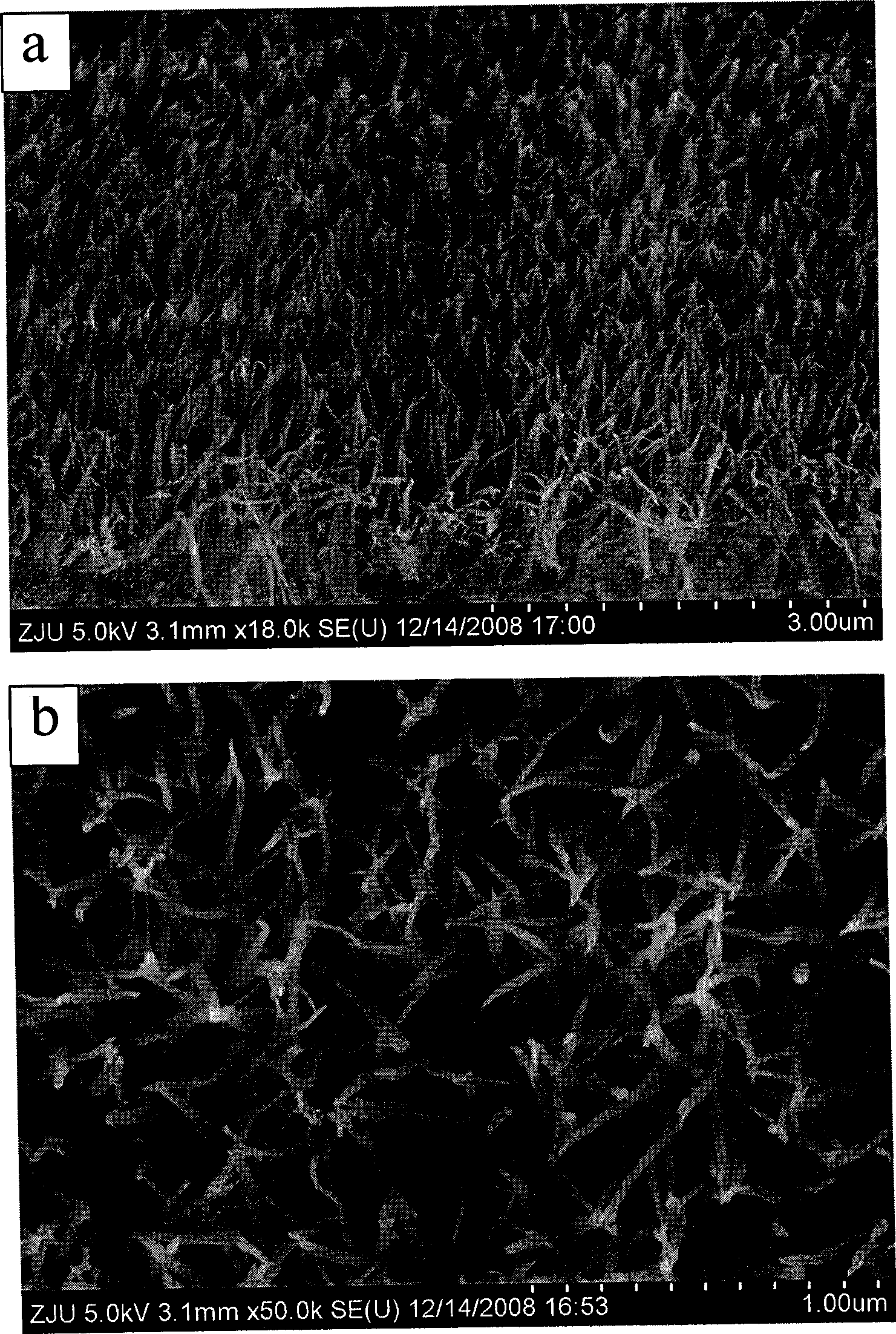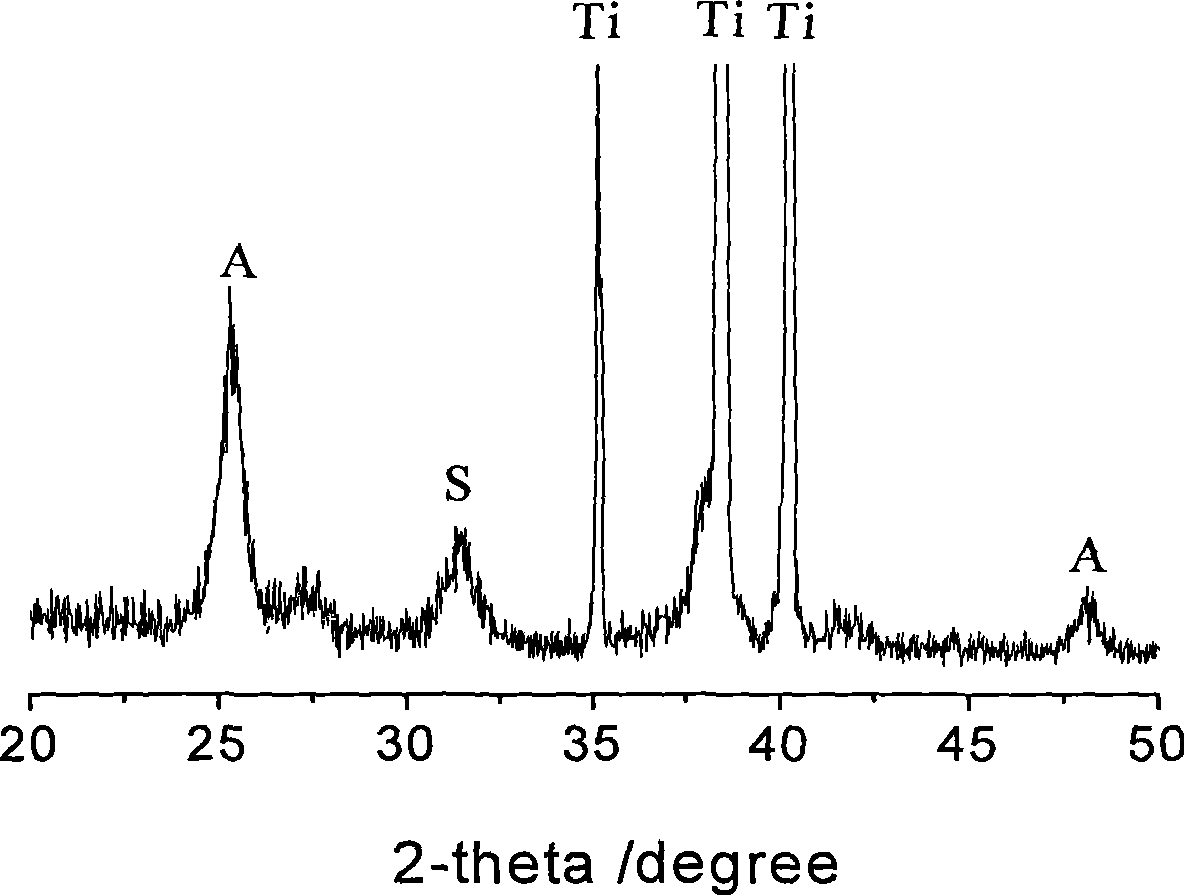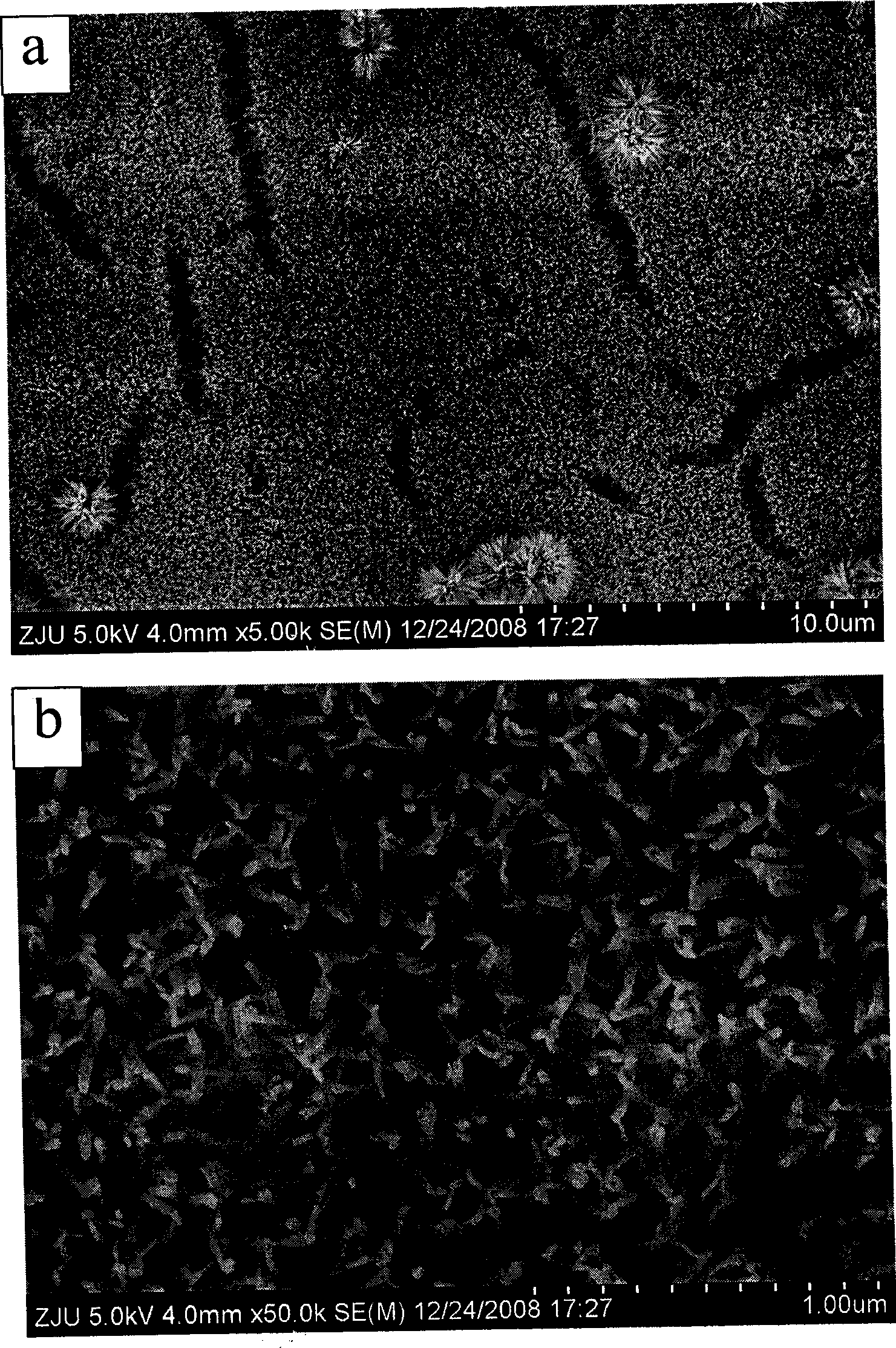Method for producing nano-wire array film of titanium dioxide
A nanowire array, titanium dioxide technology, applied in the direction of titanium dioxide, titanium oxide/hydroxide, etc., to achieve the effect of large specific surface area, pure film and ideal crystallization
- Summary
- Abstract
- Description
- Claims
- Application Information
AI Technical Summary
Problems solved by technology
Method used
Image
Examples
Embodiment 1
[0021] 1) Mix hydrofluoric acid with a concentration of 55% by mass, nitric acid with a concentration of 65% by mass, and deionized water in a volume ratio of 1:3:6 to obtain a pickling solution.
[0022] 2) Add 0.0145 moles of nitric acid and 0.00012 moles of melamine in 50 milliliters of 30% hydrogen peroxide solution in order to obtain a reaction liquid.
[0023] 3) Set the size to 5×5×0.01(cm 3 ) The surface of the metal titanium plate is pickled with the above pickling solution at a temperature of 60° C., and then cleaned with deionized water in ultrasonic waves. The cleaned metal titanium plate was immersed in 50 ml of reaction solution, and reacted at 80° C. for 72 hours.
[0024] 4) The reacted titanium plate was gently rinsed with deionized water, dried and placed in a muffle furnace at 450° C. for 1 hour.
[0025] Response result:
[0026] The surface of the titanium plate is uniformly generated as figure 1 In the titanium dioxide nanowire array film shown, the a...
Embodiment 2
[0028] 1) with embodiment 1.
[0029] 2) Add 0.00870 moles of nitric acid and 0.00012 moles of melamine in 50 milliliters of 30% hydrogen peroxide solution in order to obtain a reaction liquid.
[0030] 3) with embodiment 1.
[0031] 4) The reacted titanium plate was gently rinsed with deionized water, dried and placed in a muffle furnace at 550° C. for 1 hour.
[0032] Response result:
[0033] The surface of the titanium plate is uniformly generated as image 3 In the titanium dioxide nanowire array film shown, the average diameter of the nanowire array is 25 nm, and the aspect ratio is about 25.
Embodiment 3
[0035] 1) with embodiment 1.
[0036] 2) Add 0.0290 moles of nitric acid and 0.00012 moles of melamine in 50 milliliters of 30% hydrogen peroxide solution in order to obtain a reaction solution.
[0037] 3) with embodiment 1.
[0038] 4) The reacted titanium plate was gently rinsed with deionized water, dried and placed in a muffle furnace at 350° C. for 1 hour.
[0039] Response result:
[0040] The top of the titanium dioxide nanowire array is uniformly dispersed with a small amount of titanium dioxide aggregates with a nanoflower structure of about 1 micron in size, such as Figure 4 as shown in b. This structure can obtain better photocatalytic performance than pure nanowires.
PUM
| Property | Measurement | Unit |
|---|---|---|
| The average diameter | aaaaa | aaaaa |
| Size | aaaaa | aaaaa |
| Diameter | aaaaa | aaaaa |
Abstract
Description
Claims
Application Information
 Login to View More
Login to View More - R&D
- Intellectual Property
- Life Sciences
- Materials
- Tech Scout
- Unparalleled Data Quality
- Higher Quality Content
- 60% Fewer Hallucinations
Browse by: Latest US Patents, China's latest patents, Technical Efficacy Thesaurus, Application Domain, Technology Topic, Popular Technical Reports.
© 2025 PatSnap. All rights reserved.Legal|Privacy policy|Modern Slavery Act Transparency Statement|Sitemap|About US| Contact US: help@patsnap.com



